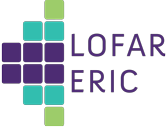Speaker
Description
The advancement of 21-cm Cosmology, particularly in probing the Epoch of Reionization (EoR) and beyond (z>6), relies on deep, wide-field observations at low frequencies. At the low frequencies required for the EoR science-case, the inherent instability of an interferometer requires extremely precise direction-dependent calibration. Many tools for direction-dependent calibration utilize a sky and beam model for finding element gains which minimize the difference between observed and modeled gains. However, these standard calibration tools struggle with precision calibration when small beam modelling errors and relatively bright sources distant from the phase center are present. The resulting errors are currently limiting the attainable sensitivity in LOFAR Epoch of EoR observations. This may be due to the highly spatially, spectrally and temporally varying nature of the instrument beam of minimally redundant arrays outside of their primary beam. Our objective is to thoroughly characterize this problem using LOFAR simulations and to explore potential solutions. This presentation will outline our findings and discuss their implications for improving direction-dependent calibration in radio astronomy.

